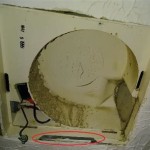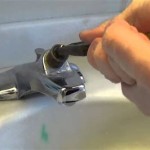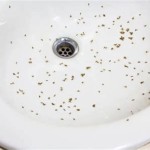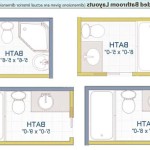Bathroom Sink Drain Won't Come Out: A Troubleshooting Guide
Removing a bathroom sink drain can be a straightforward task, but occasionally, it presents unexpected challenges. This article provides a comprehensive guide to troubleshoot and resolve issues encountered when a bathroom sink drain refuses to budge.
Understanding the Components
Before attempting removal, understanding the basic components of a bathroom sink drain is crucial. These include the pop-up assembly, the clevis strap, the drain flange, and the nut that secures the drain to the sink. Familiarity with these parts simplifies the diagnosis and resolution of problems.
Common Reasons for Stuck Drains
Several factors can contribute to a stubborn drain. Corrosion is a frequent culprit, especially in older plumbing systems. Build-up of soap scum, hair, and other debris can also create resistance. Over-tightening during the initial installation can make removal difficult. Finally, damage to the components themselves can prevent smooth disassembly.
Tools and Materials for Removal
Having the right tools on hand can significantly simplify the process. Essential tools include a basin wrench, pliers, a screwdriver, and possibly penetrating oil. A bucket and rags are also recommended to manage any water spillage and to protect the sink surface.
Step-by-Step Removal Process
The typical removal process begins with disconnecting the P-trap and the drain lines underneath the sink. This step requires careful attention and the placement of a bucket to catch any remaining water. Next, the pivot rod needs to be detached from the drain stopper mechanism. This typically involves loosening a screw or nut located at the back of the drain assembly inside the cabinet.
Troubleshooting Difficult Removals
If the drain flange nut refuses to turn, several strategies can be employed. First, attempt to break free any corrosion or debris using penetrating oil. Allow the oil to soak in for several minutes before attempting to loosen the nut again. Applying steady pressure with a basin wrench can help to avoid stripping the nut.
Addressing Corrosion
Corrosion is a common issue, especially in older homes. Penetrating oil can be highly effective in loosening corroded parts. If the nut is severely corroded, it may be necessary to cut it off carefully using a hacksaw or a rotary tool equipped with a cutting disc. Extreme caution should be exercised to avoid damaging the sink.
Dealing with a Damaged Drain
If the drain is damaged, replacement is likely the best solution. This may involve removing the entire drain assembly, including the flange and tailpiece. Depending on the extent of the damage, professional assistance may be required.
Preventing Future Problems
Several preventative measures can be taken to avoid future drain removal issues. Regular cleaning of the drain can prevent the build-up of debris. Applying plumber’s grease to the threads of the drain nut during installation can help prevent corrosion and make future removal easier.
Seeking Professional Help
If the drain remains stubbornly stuck despite these efforts, contacting a licensed plumber is recommended. A professional plumber possesses the expertise and specialized tools to address more complex situations and can minimize the risk of causing further damage to the plumbing system.
Alternative Removal Methods
In extremely difficult cases where conventional methods fail, alternative removal methods might be necessary. These can include using specialized drain removal tools or even cutting the drain flange from underneath the sink. However, these methods should be approached with caution and are best left to experienced professionals.
Safety Precautions
Throughout the entire removal process, prioritizing safety is essential. Always wear appropriate eye protection and gloves when working with plumbing components. Turn off the water supply to the sink before starting any work to prevent accidental flooding. If using power tools, ensure they are properly grounded and operate them according to the manufacturer’s instructions.
Understanding Different Drain Types
Bathroom sink drains come in various designs, including push-button, lift-and-turn, and grid drains. Understanding the specific type of drain installed in the sink is crucial for effective removal. Consulting the manufacturer's instructions or online resources can provide specific guidance for each drain type.
Maintaining Your Plumbing System
Regular maintenance is vital for the longevity and optimal performance of any plumbing system. Periodically inspecting and cleaning drains, checking for leaks, and addressing minor issues promptly can prevent more significant problems from developing over time. This proactive approach can save both time and money in the long run.
When Permanently Removing A Mechanical Bathroom Sink Stopper How Do You Prevent Water Leakage From The Hole Where Horizontal Pivot Rod Was Should Whole Tailpiece Be Replaced To Avoid This

My Pop Up Drain Is Not Draining Water

Why Is My Bathroom Basin Not Draining Living By Homeserve
Why Does A Bathroom Sink Drain Slowly Quora

How To Remove A Sink Stopper Guide

How To Get Something That Fell Down The Sink Drain

How To Replace Or Maintain A Sink Pop Up Drain Assembly

How To Unclog A Bathroom Sink Our Oily House

How To Clear A Clogged Drain Reviews By Wirecutter

Karran Kassel Single Handle Hole Vessel Bathroom Faucet With Matching Pop Up Drain In Chrome Kbf442c The Home Depot
Related Posts







